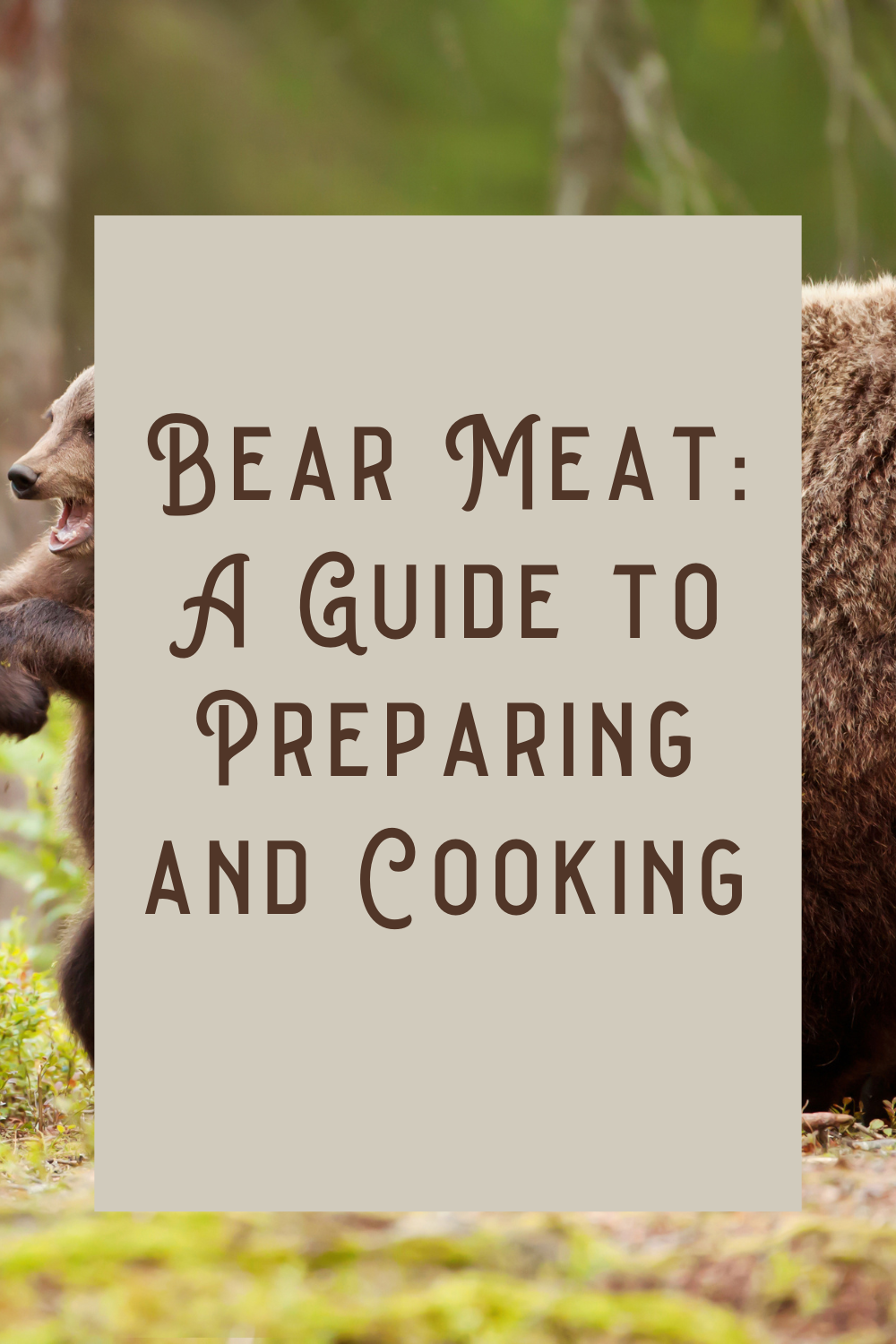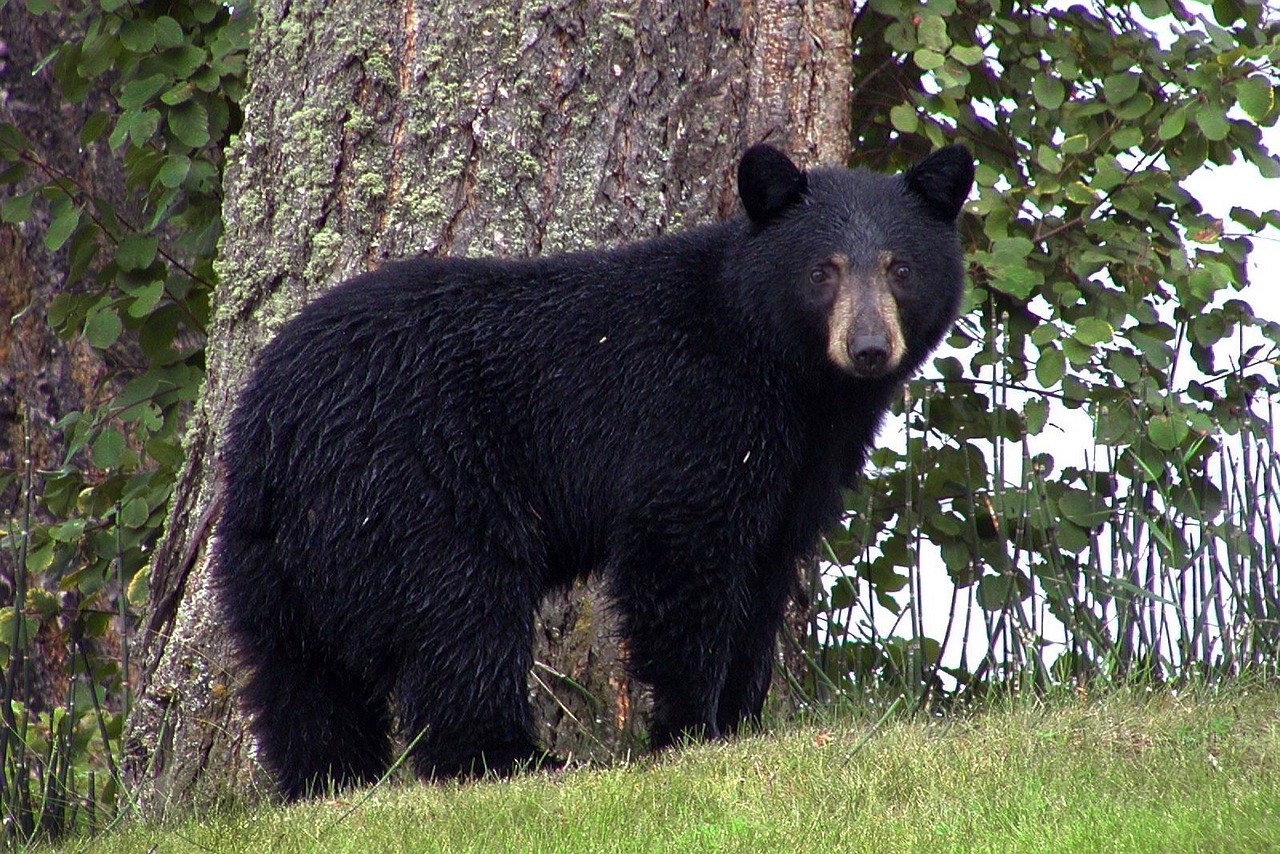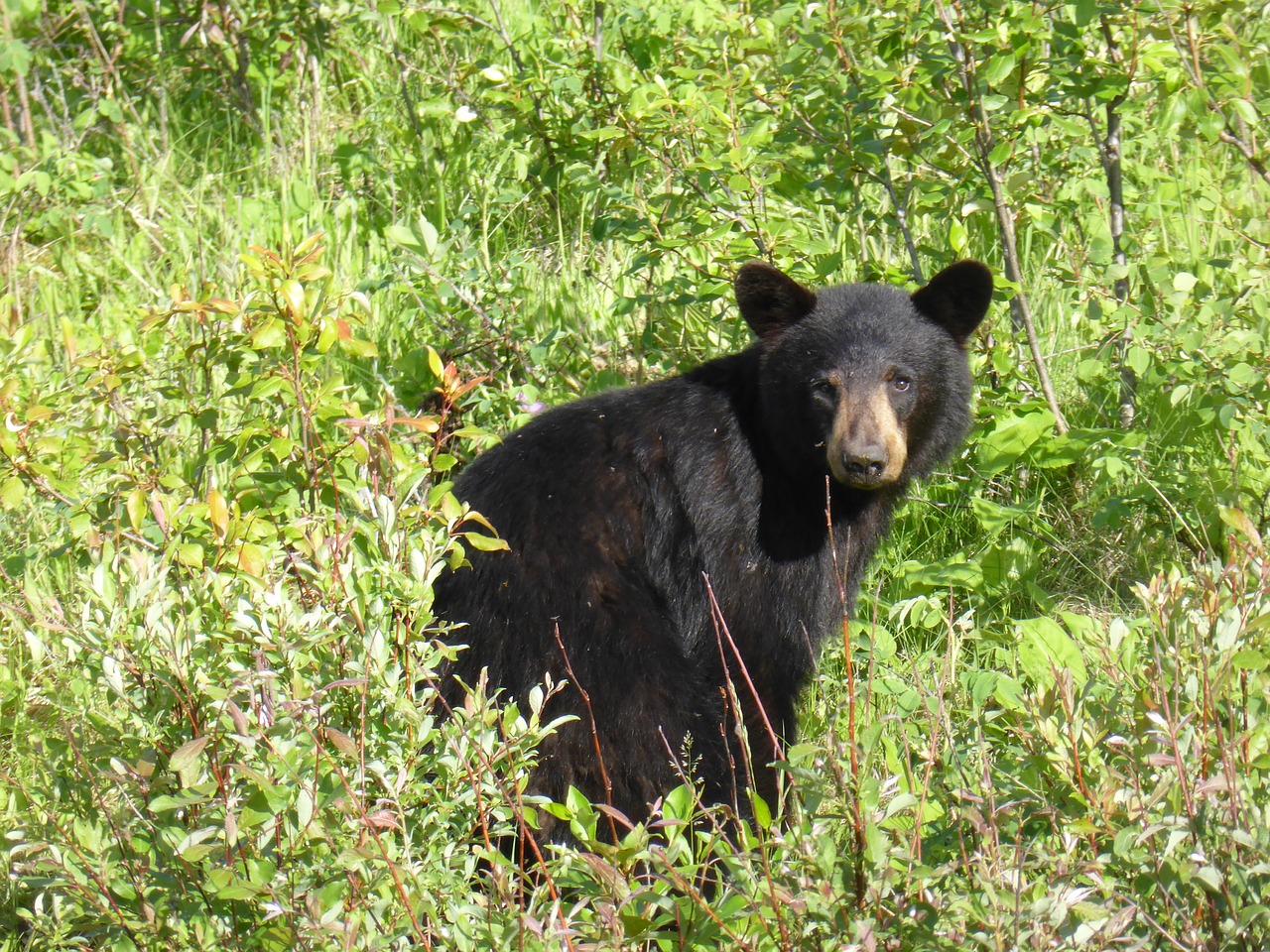Bear meat is a topic that often sparks curiosity and interest among many people. For some, the idea of consuming bear meat may seem exotic and adventurous, while for others, it may be a cultural or traditional practice. Regardless of the reason, bear meat has been consumed for centuries by various cultures around the world.

In North America, indigenous communities have been hunting and consuming bear meat for thousands of years. It is considered a traditional food source and is often used in cultural ceremonies and gatherings. However, the consumption of bear meat is not limited to indigenous communities. In recent years, there has been a growing interest in hunting and consuming bear meat among non-indigenous individuals as well.
Bear meat is known for its rich flavor and tender texture. It is often compared to pork or beef, but with a slightly sweeter taste. However, it is important to note that bear meat can also carry health risks, such as the potential for trichinosis, a parasitic infection. As such, it is important to properly prepare and cook bear meat to ensure it is safe for consumption. In this article, we will explore the history and cultural significance of bear meat, as well as its nutritional value and potential health risks.
Bear Meat Basics

If you're looking for a unique and flavorful addition to your diet, bear meat may be worth considering. Here are some basic facts about bear meat to help you decide if it's right for you.
Nutritional Profile
Bear meat is a good source of protein, which is essential for building and repairing muscle tissue. In fact, a 3-ounce serving of bear meat contains about 22 grams of protein. It's also a good source of iron, which helps your body produce red blood cells. Bear meat is also high in vitamin A, which is important for maintaining healthy skin, vision, and immune function.
Download Now: Beginner's Guide to Cooking Bear Meat
Culinary Uses
Bear meat has a rich, gamey flavor that pairs well with hearty ingredients like potatoes, mushrooms, and root vegetables. It can be prepared in a variety of ways, including grilling, roasting, and stewing. Because bear meat is lean, it's important to cook it slowly and at a low temperature to prevent it from becoming tough.
Health Considerations
While bear meat can be a healthy addition to your diet, there are some important health considerations to keep in mind. Because bear meat is a wild game, it may contain higher levels of contaminants like mercury and lead than other types of meat. It's also important to ensure that the bear meat you're consuming is properly cooked to prevent the risk of foodborne illness.
Overall, bear meat can be a flavorful and nutritious addition to a balanced diet. Just be sure to source it from a reputable supplier and follow proper cooking and safety precautions.
Preparing Bear Meat

When it comes to preparing bear meat, there are a few things to keep in mind. We want to make sure that we are taking the necessary safety precautions, using proper cooking techniques, and storing the meat correctly to avoid any potential health risks.
Read More: Black Bear Hunting Gear Checklist (with Printable)
Safety First
Before we start cooking, it's important to note that bear meat can contain parasites and bacteria that can be harmful to humans. To minimize the risk of infection, we should always wear gloves when handling the meat, and make sure to thoroughly wash our hands and any utensils or surfaces that come into contact with the meat.
It's also important to cook the meat to an internal temperature of at least 165°F to kill any potential parasites or bacteria, such as Trichinella. We can use a meat thermometer to ensure that the meat has reached a safe temperature.
Cooking Techniques
When it comes to cooking bear meat, there are a few different techniques we can use. One popular method is slow cooking, which can help to tenderize the meat and bring out its natural flavors. We can also grill or pan-fry the meat for a crispy exterior and juicy interior.
To add some extra flavor, we can season the meat with salt, pepper, and olive oil before cooking. However, we should avoid using too much salt, as bear meat can be naturally salty.
Preservation and Storage
If we have leftover bear meat, it's important to store it correctly to avoid spoilage. We can cool the meat quickly by placing it in an ice bath or refrigerating it immediately after cooking. We should also make sure to remove any excess fat or gristle before storing the meat, as these can cause the meat to spoil more quickly.
To store the meat, we can wrap it tightly in plastic wrap or aluminum foil and place it in the refrigerator for up to 3 days. Alternatively, we can freeze the meat for up to 6 months. When thawing frozen bear meat, we should do so in the refrigerator or in a sealed plastic bag submerged in cold water.
Download Now: Beginner's Guide to Cooking Bear Meat
Bear Meat Recipes
If you're looking for a unique and flavorful meat to cook with, bear meat is a great option. It's a lean game meat that can be used in a variety of dishes, from stews to burgers. Here are some of our favorite bear meat recipes:
Main Dishes
Bear Meat Stew
One of the most popular ways to cook bear meat is in a stew. Start by browning the bear meat in a large pot with garlic and thyme. Add in chopped vegetables like carrots, potatoes, and onions, and let the stew simmer for a few hours until the meat is tender. Thicken the stew with a mixture of cornstarch and water, and serve with crusty bread.
Bear Meat Chili
For a spicy twist on bear meat, try making a chili. Brown ground bear meat in a skillet with onions and garlic, then add in diced tomatoes, kidney beans, and chili powder. Let the chili simmer for at least an hour, then serve with shredded cheese and a dollop of sour cream.
Bear Meat Burgers
If you're in the mood for a burger, try using ground bear meat instead of beef. Mix the bear meat with chopped onions, balsamic vinegar, and a pinch of salt and pepper. Form the meat into patties and grill or fry until cooked through. Serve on a bun with your favorite toppings.
Try this one: Shepherd's Pie with Bear Meat
Sides and Condiments
Bear Fat Fries
If you have some extra bear fat lying around, try using it to fry up some potatoes. Cut the potatoes into thin strips and fry them in melted bear fat until crispy and golden brown. Season with salt and pepper and serve as a side dish.
Bear Meat Sausage
If you have a meat grinder, try making your own bear meat sausage. Grind up the bear meat with pork fat and seasonings like sage and black pepper. Stuff the mixture into sausage casings and cook on the grill or in a skillet until cooked through.
Bear Meat Gravy
For a rich and flavorful gravy, try using bear fat instead of butter or lard. Melt the bear fat in a skillet and whisk in some flour to create a roux. Slowly add in beef or chicken broth and whisk until the gravy thickens. Serve over roasted bear meat or mashed potatoes.
Bear meat is a unique and delicious ingredient that can be used in a variety of dishes. Whether you're making a stew, chili, or burger, be sure to cook the meat thoroughly to avoid the risk of trichinosis. With its rich flavor and lean texture, bear meat is sure to be a hit at your next dinner party.
Hunting and Field Processing
Bear Hunting Practices
When it comes to hunting for bear meat, there are a few things to keep in mind. Firstly, it is important to check the hunting regulations in your area to ensure that you are hunting during the appropriate season. Additionally, it is important to hunt in areas where bears are known to be present. Many hunters prefer to use bait to attract bears, while others prefer to stalk their prey. Regardless of the method used, it is important to be aware of the dangers of hunting such a large and powerful animal.
Field Dressing and Skinning
Once the bear has been successfully hunted, it is important to field dress and skin the animal as quickly as possible to ensure that the meat does not spoil. This process involves removing the internal organs and skinning the animal, which can be a difficult and time-consuming task. It is important to have the necessary tools on hand, including a sharp knife and a saw.
After the animal has been field dressed and skinned, the meat should be cooled as quickly as possible to prevent spoilage. This can be achieved by hanging the meat in a cool, dry place or by packing it in ice. It is important to handle the meat carefully to avoid contamination and to ensure that it remains safe to eat.
Overall, hunting for bear meat can be a challenging and rewarding experience. With proper preparation and care, it is possible to enjoy delicious and nutritious game meat from this impressive big game animal.
Frequently Asked Questions
What does bear meat taste like?
Bear meat has a distinct flavor that can vary depending on the species of bear and its diet. Generally, it has a rich, gamey taste that is often compared to beef or venison. Some people describe it as being slightly sweet or nutty.
How do you properly cook bear meat?
It is important to cook bear meat thoroughly to prevent the risk of trichinosis, a parasitic infection. The meat should be cooked to an internal temperature of 160°F (71°C). It is recommended to cook bear meat slowly over low heat to help tenderize it. Common cooking methods include roasting, stewing, or braising.
What are the nutritional benefits of eating bear meat?
Bear meat is a good source of protein and contains essential vitamins and minerals, such as iron and zinc. However, it is also high in fat and cholesterol, so it should be consumed in moderation as part of a balanced diet.
Are there any health risks associated with consuming bear meat?
Consuming undercooked or raw bear meat can lead to the risk of trichinosis, a parasitic infection that can cause fever, muscle pain, and swelling. It is important to cook bear meat thoroughly to prevent this risk. Additionally, some bears may carry diseases or contaminants, so it is important to properly handle and prepare the meat.
Is it legal to eat bear meat in the United States?
It is legal to hunt and eat bear meat in many states in the United States. However, it is important to check local regulations and obtain any necessary permits before hunting or consuming bear meat.
What's the best season to hunt bears for better-tasting meat?
The best season to hunt bears for better-tasting meat is in the fall when they have been feeding on berries and other natural foods. This can enhance the flavor of the meat and reduce any gaminess. However, it is important to follow local hunting regulations and obtain any necessary permits.
